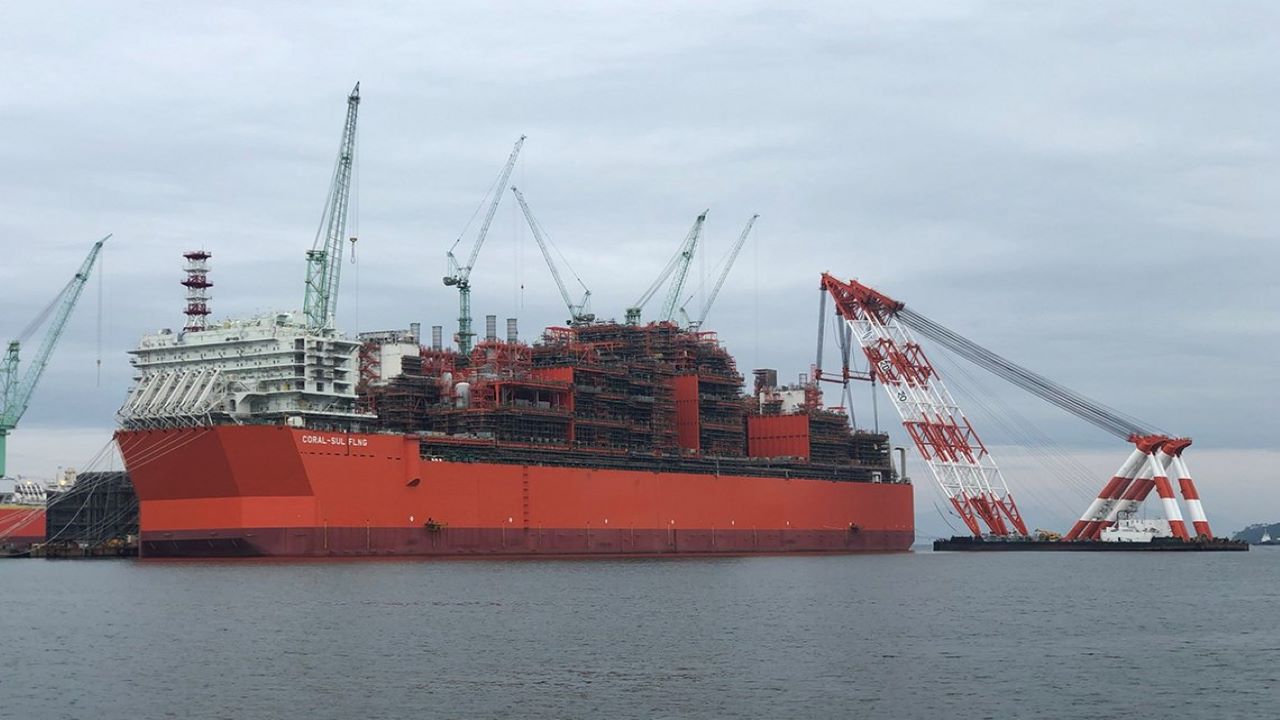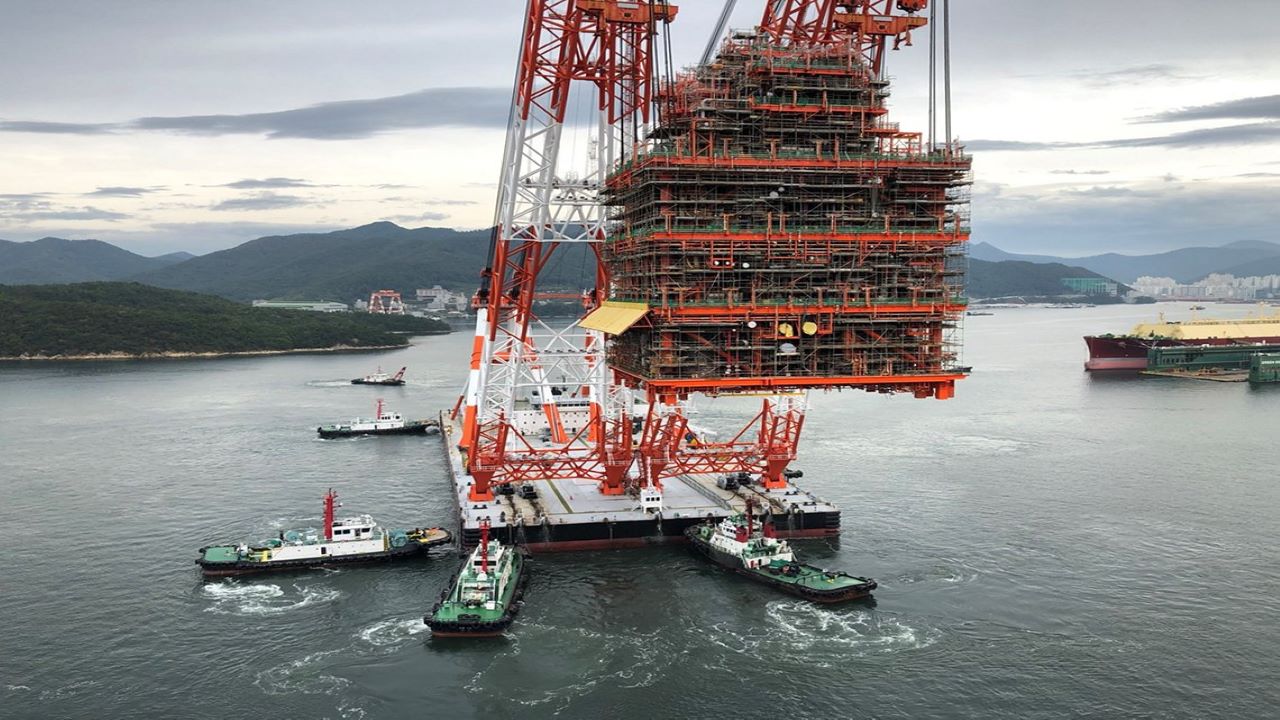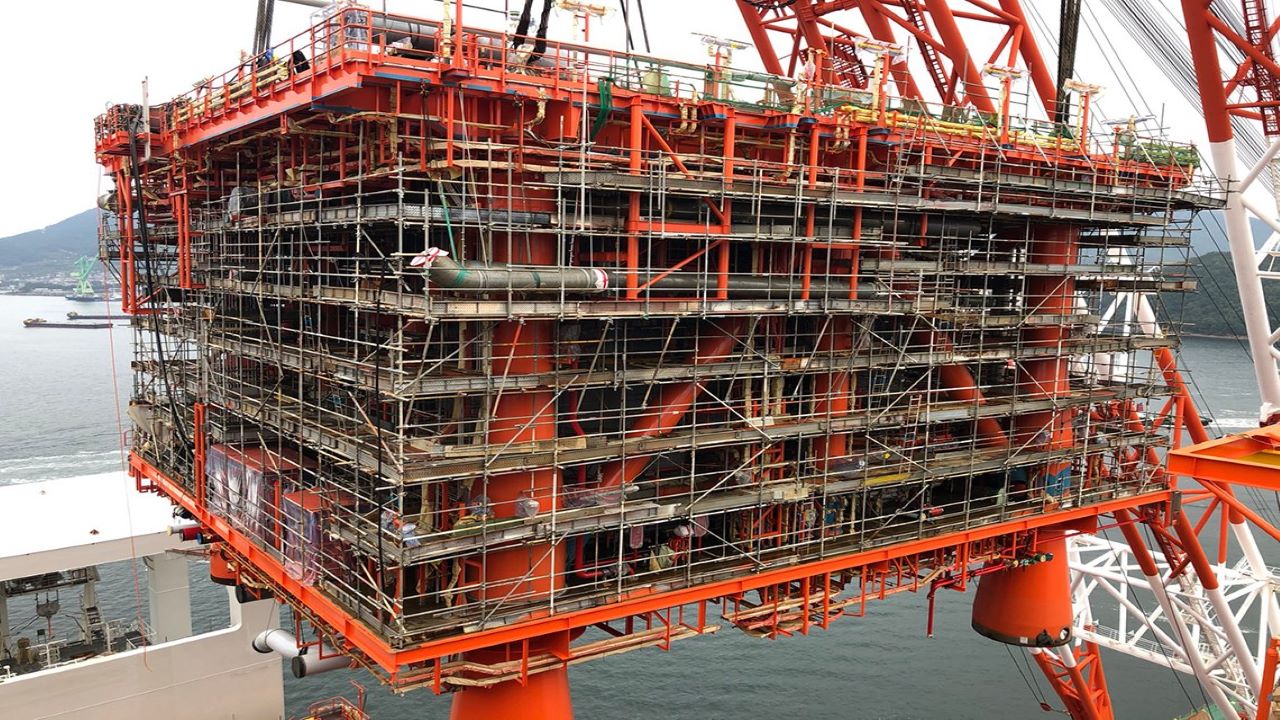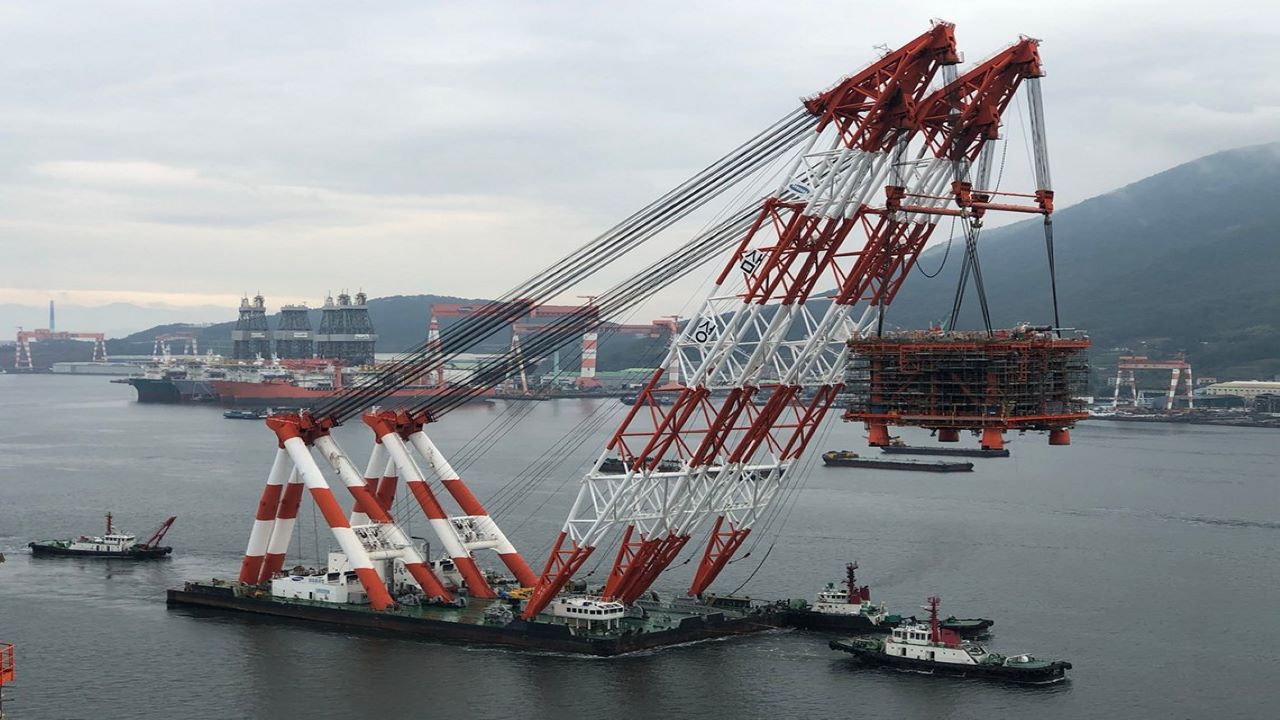The Coral South FLNG Project involves the development of the Coral Sul floating liquefied natural gas (FLNG) facility in the Coral South field in Area 4 in the Rovuma Basin off the coast of Mozambique.
The FLNG unit will be used for the production and monetisation of gas reserves in the southern part of the Coral gas reservoir.
Area 4 is operated by Eni through Eni East Africa (EEA), which holds a 70% interest in the concession. EEA’s Area 4 partners include Portugal’s Galp Energia, South Korea’s Kogas and Mozambique’s Empresa Nacional de Hidrocarbonetos (ENH), with each holding a 10% stake. Eni owns a 50% indirect interest in Area 4 while China National Petroleum Corporation (CNPC) holds a 20% indirect interest through EEA.
The Coral Sul FLNG Project was launched in 2017 while the financial investment decision (FID) on the project was made in December 2017 and construction works commenced in 2018.
The hull assembly for the Coral Sul FLNG began in July 2019 and the hull was successfully launched in January 2020. The Coral Sul FLNG is expected to sail away in the second half of 2021 with gas production start-up at the Coral South field expected in 2022.
Coral South field details
Discovered in May 2012, the Coral South field is located approximately 80km off the coast of the Palma bay in the northern province of Cabo Delgado at a water depth of more than 2,000m.
The field is estimated to contain approximately 450 billion cubic metres of gas in place. The Coral South field was the first project approved for development by Eni and its Area 4 partners to exploit the gas resources discovered within Area 4 of the Rovuma Basin.
The environmental licence for the Coral discovery was granted in September 2015 while the plan of development (POD) for the Coral discovery was approved by the Mozambique Government in February 2016. The investment plan for the phase one development of the Coral South project was approved by Eni’s board of directors in November 2016.
Coral Sul FLNG details
The gas liquefaction capacity of the Coral Sul FLNG treatment and liquefaction plant will be approximately 3.4 million tonnes per annum (Mtpa), upon completion. The floating platform will also be the first FLNG vessel to be deployed in the deep waters of the African continent.
The 432m-long and 66m-wide hull of the FLNG has a gross weight of approximately 220,000t. The vessel will be anchored at a water depth of 2,000m using 20 mooring lines with a combined weight of approximately 9,000t. A total of 24 modules will be integrated into the hull to house the LNG storage tanks, treatment facilities and living quarters.
Construction of the hull’s modules started in September 2019 and the installation of the last of the 13 topside modules on the hull was completed in November 2020. The topside of the hull comprises 12 treatment and LNG modules. The eight-storey living quarter module weighs more than 6,000t with the capacity to accommodate up to 350 people.
A total of six subsea wells will feed the liquefaction units of the FLNG. The drilling works of the wells commenced in 2019 with the Saipem 12000 rig and each well will have an average depth of approximately 3,000m.
Off-take agreements
In October 2016, Eni and its Area 4 partners signed an agreement with BP Poseidon, a wholly owned subsidiary of BP, for the sale of the LNG produced by Coral South. The agreement will allow BP to off-take the full volumes of LNG produced from the gas field for more than 20 years.
Financing for the Coral Sul FLNG
The Coral South FLNG project achieved financial closure in December 2017, for total funding of $4.67bn. The multi-source financing will be secured though loan facilities from BPI Export Credit Agency, Ksure Export Credit Agency, KEXIM Export Credit Agency, Sinosure Export Credit Agency, Sace Export Credit Agency, and Commercial Bank.
Contractors involved
A consortium of Japanese engineering company JGC, global oil and gas services firm TechnipFMC, and South Korea’s Samsung Heavy Industries received a contract for the engineering, procurement, construction, installation, commissioning and start-up (EPCIC) of the Coral South FLNG facility, along with associated risers and subsea flow-lines in June 2017.
The contract also requires the consortium to install the umbilicals and subsea equipment. Under the contract, the joint venture between JGC and TechnipFMC will perform the engineering and procurement of equipment for the FLNG topside, and the overall project management while Samsung Heavy Industries is responsible for the engineering, procurement and construction (EPC) of the hull and fabrication of the topside.
GE Oil & Gas was awarded a subsea contract in June 2017 to supply seven x-mas trees, seven subsea well-heads, three two-slot manifolds with integrated distribution units, MB rigid jumpers, and a complete topside control system for the FLNG facility. In addition, the contract includes equipment, support and technical assistance for installation, commissioning and start-up of the platform.
Offshore mooring systems supplier SOFEC was contracted for the design, construction, fabrication and installation of a permanent internal turret for Coral Sul in July 2017. Dutch shipping company ALP Maritime Services was selected to tow Coral Sul FLNG from South Korea to Mozambique.
LNG equipment maker Air Products secured a contract to provide its cryogenic coil-wound heat exchanger technology and the liquefaction process licence for the FLNG facility in July 2017.
Aker Solutions was contracted to provide three umbilicals and associated equipment to connect the FLNG facility to the subsea production system of Coral South.
In August 2017, Baker Hughes Company (formerly Baker Hughes), a GE company, was chosen for the supply of rotating equipment for the FLNG’s power and gas refrigeration process.







